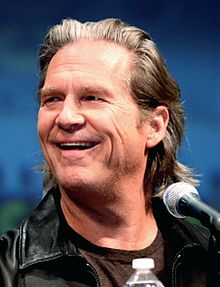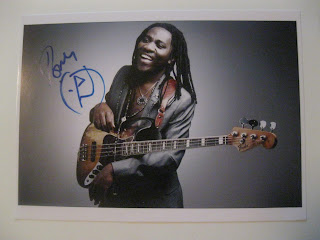 Eric David Thompson (4 November 1919 – 22 August 2015) was a British motor racing driver, book dealer and insurance broker. He participated in sports car racing between 1949 and 1955 taking his greatest success by finishing third in the 1951 Les 24 Heures
Eric David Thompson (4 November 1919 – 22 August 2015) was a British motor racing driver, book dealer and insurance broker. He participated in sports car racing between 1949 and 1955 taking his greatest success by finishing third in the 1951 Les 24 Heures du Mans and took part in the 1952 RAC British Grand Prix.
Thompson worked as a broker for Lloyd's of London. His racing career started in 1948, racing cars for HRG. He won the 1.5-litre class in the Les 24 Heures du Mans in 1949 and drove for Aston Martin driving a DB2 to third place in the 1951 24 Hours of Le Mans. He also drove in Formula Libre, RAC Tourist Trophy and Formula Two achieving minor success. He took part in his only Formula One race in the 1952 RAC British Grand Prix finishing fifth, and later spent more time working at Lloyd's. He retired from motor racing at the end of 1955. Thompson resigned from Lloyd's in the 1980s and became a dealer of rare books on motorsport.
After the war ended Thompson decided to pursue his passion of motor racing. He began his racing career in 1948 at the age of 28 and was well funded. Thompson continued to work at Lloyd's of London and was entitled to two weeks of holiday, with every third weekend off, when he raced.[3] His first race was the 12 Heures de Paris held at the Autodrome de Linas-Montlhéry in a shared drive with Robin Richards driving an HRG, finishing fourth in the 1.5-litre class and 17th overall.[4]
In 1949 Thompson made his debut in the Les 24 Heures du Mans with HRG sharing his drive with Jack Fairman. The pairing won the 1.5-litre class and finished eighth overall.[4] They later entered the 24 Hours of Belgium, at the Circuit de Spa-Francorchamps where he clinched victory in their class.[3] Thompson also won two handicap races at Goodwood.[5] Thompson later took a class win in the Silverstone International Trophy and finished sixth in his class in the Prescott Hillclimb. In 1950 he joined Aston Martin and gave support to three drivers: Reg Parnell, Peter Collins and Roy Salvadori.[3]
 Thompson's first race for Aston Martin was a one-hour race held at Silverstone where he finished fourth in his class and 14th overall. He also took part in the 1950 24 Heures du Mans sharing an Aston Martin DB2 with John Gordon but was forced out after nine laps due to engine failure.[3] Thompson also raced with HRG and secured a class win finishing second overall at Blandford, third in a Goodwood Handicap and clinched a class win at the Cambridge University Sprint at Bedwell Hey. In the same year Thompson made his debut in Formula Three driving a Cooper-Vincent at Castle Combe where he retired.[3]
Thompson's first race for Aston Martin was a one-hour race held at Silverstone where he finished fourth in his class and 14th overall. He also took part in the 1950 24 Heures du Mans sharing an Aston Martin DB2 with John Gordon but was forced out after nine laps due to engine failure.[3] Thompson also raced with HRG and secured a class win finishing second overall at Blandford, third in a Goodwood Handicap and clinched a class win at the Cambridge University Sprint at Bedwell Hey. In the same year Thompson made his debut in Formula Three driving a Cooper-Vincent at Castle Combe where he retired.[3]In 1951 Thompson competed prominently in open-wheel racing. He competed in the Goodwood Lavant Cup in a Cooper finishing fifth and finished in the same position in a Bugatti Type 51 in a Boreham Libre event. He later competed in an ERA/Delage and Delahaye and other Libre races, and took part in sports car events with an Aston Martin DB2 in the RAC Tourist Trophy where he finished third in his class and eighth overall.[3] For the works team, Thompson shared a DB2 with Lance Macklin in the Les 24 Heures du Mans where the pair clinched victory in the 3-litre class and finished third overall.[6]
 In 1952 Thompson took part in his third Les 24 Heures du Mans driving an Aston Martin DB3
alongside Parnell but retired from transmission problems. The pair
suffered a further retirement from the Goodwood Nine Hours when, during
the race, the car being driven by Thompson entered the pitlane with
smoke coming out of the car and Parnell was not prepared to take over
the seat. Parnell grabbed Thompson by the arm and dragged him out before
the car caught fire.[3] Throughout the year he drove a DB2 entered by Peter Walker, clinching two victories in handicap events at Goodwood and one at Snetterton
with a seventh and eighth at the same circuit. He later took third in
class at the CUAC Bottisham Sprint. Thompson took second, seventh and
tenth in races at Snetterton, third at Boreham and Castle Combe driving an ERA/Delage and fifth in a private ERA at the British Grand Prix Libre event.
In 1952 Thompson took part in his third Les 24 Heures du Mans driving an Aston Martin DB3
alongside Parnell but retired from transmission problems. The pair
suffered a further retirement from the Goodwood Nine Hours when, during
the race, the car being driven by Thompson entered the pitlane with
smoke coming out of the car and Parnell was not prepared to take over
the seat. Parnell grabbed Thompson by the arm and dragged him out before
the car caught fire.[3] Throughout the year he drove a DB2 entered by Peter Walker, clinching two victories in handicap events at Goodwood and one at Snetterton
with a seventh and eighth at the same circuit. He later took third in
class at the CUAC Bottisham Sprint. Thompson took second, seventh and
tenth in races at Snetterton, third at Boreham and Castle Combe driving an ERA/Delage and fifth in a private ERA at the British Grand Prix Libre event.Thompson entered a works Connaught for the 1952 RAC British Grand Prix with a Lea-Francis engine and qualified the car ninth on the grid.[7] In the race he made up a position when Gordini driver Robert Manzon was forced to retire with a clutch problem. He managed to finish in fifth place, three laps behind race winner Alberto Ascari and ahead of 1950 World Drivers' Champion Giuseppe Farina, and behind teammate Dennis Poore.





























